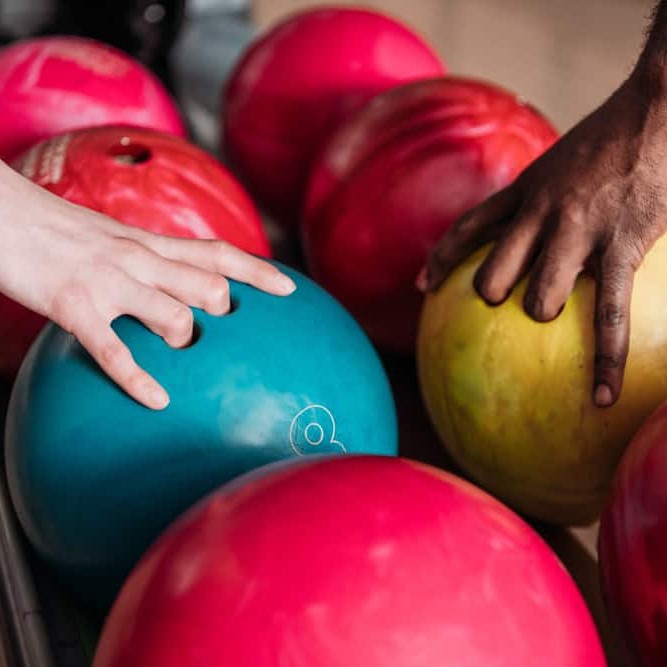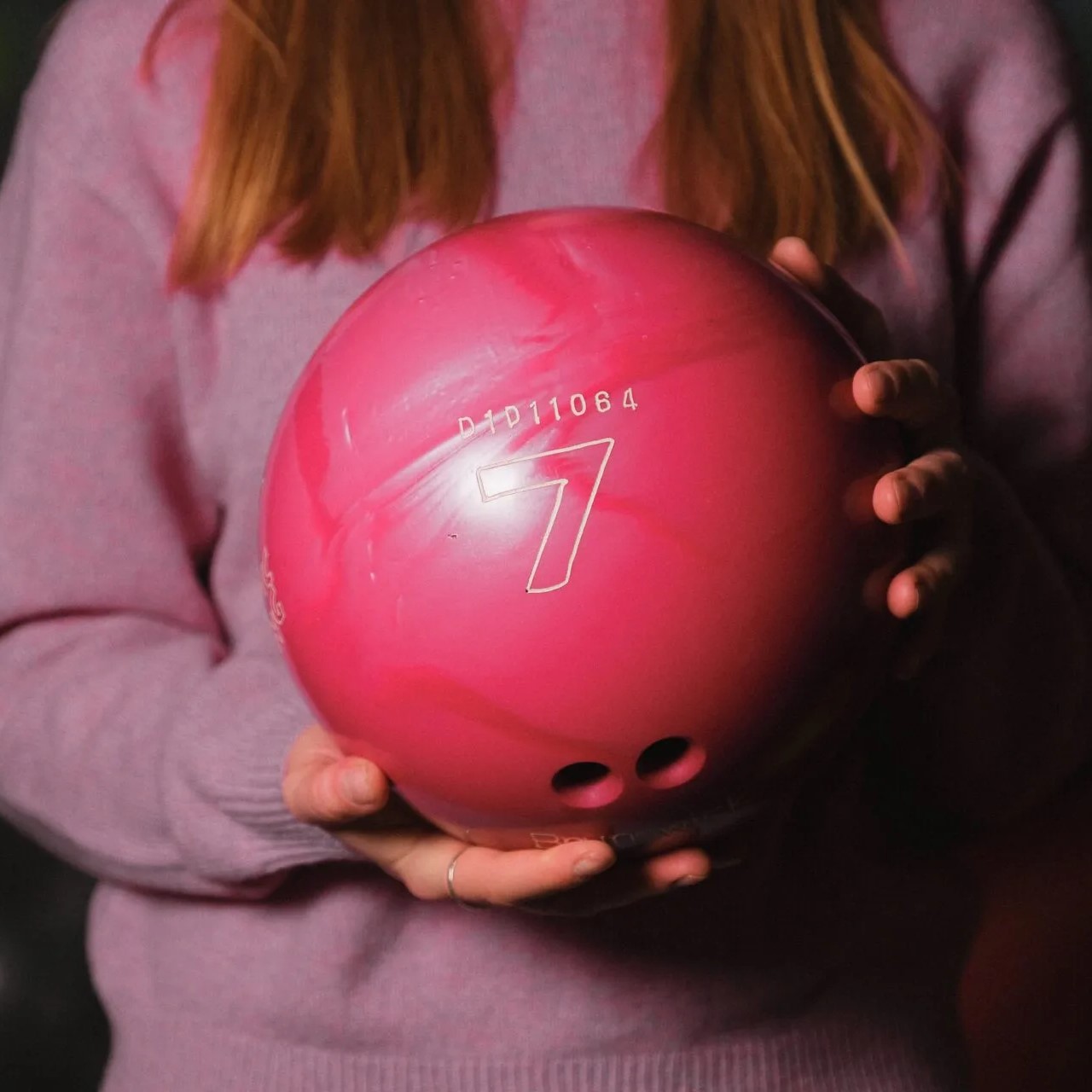Bowling is a beloved sport enjoyed by millions worldwide, whether in competitive leagues or casual alley outings. One of the fundamental skills that can significantly impact your performance is learning how to hold a bowling ball correctly. Understanding the proper grip not only enhances your control and accuracy but also reduces the risk of injury. In this comprehensive guide, we will delve into the essentials of how to hold a bowling ball, offering tips and techniques to help you elevate your game.
 Understanding the Basics: Anatomy of a Bowling Ball Grip
Understanding the Basics: Anatomy of a Bowling Ball Grip
Choosing the Right Ball
Before diving into how to hold a bowling ball, it’s crucial to select the right ball. Bowling balls come in various weights, sizes, and finger hole configurations. Typically, the ball should weigh about 10% of your body weight, not exceeding 16 pounds. Additionally, ensure that the finger holes fit snugly but comfortably, allowing for a secure grip without causing strain.
The Conventional Grip
The conventional grip is the most common method beginners use to hold a bowling ball. It involves inserting the thumb fully into the thumb hole and the middle and ring fingers up to the second knuckle. This grip offers stability and control, making it easier to release the ball smoothly.
The Fingertip Grip
For those seeking more spin and hook potential, the fingertip grip is an excellent alternative. Unlike the conventional grip, the fingertip grip involves inserting only the fingertips into the finger holes, leaving the thumb fully extended. This technique allows for greater wrist movement and rotation, enabling bowlers to achieve more significant hook effects.
Step-by-Step Guide
Step 1: Positioning Your Fingers
Start by placing your bowling hand on the ball. Insert your thumb into the thumb hole first, ensuring it fits comfortably without excessive force. Next, slide your middle and ring fingers into their respective holes up to the second knuckle. The fingers should rest naturally without tension.
Step 2: Achieving the Correct Grip Pressure
Applying the right amount of pressure is essential. Your grip should be firm enough to control the ball but relaxed enough to allow a smooth release. Avoid gripping too tightly, as this can lead to muscle fatigue and hinder your swing.
Step 3: Hand and Wrist Alignment
Maintain a straight wrist throughout your approach and swing. Keep your hand in a neutral position to prevent unwanted hooks or hooks. Proper alignment ensures that the ball travels straight down the lane, maximizing your chances of knocking down pins.
Step 4: Practicing the Release
The release is where the ball leaves your hand and transitions into motion. Focus on a fluid motion, allowing the ball to slide out smoothly rather than being flung forcefully. This controlled release promotes accuracy and consistency in your shots.
 Tips for Improving Your Bowling Grip
Tips for Improving Your Bowling Grip
Customize Your Grip
Everyone’s hands are different, so it’s essential to customize your grip for maximum comfort and effectiveness. Experiment with slight adjustments to finger placement and pressure until you find the most natural and efficient grip.
Strengthen Your Fingers and Wrist
A strong grip requires muscular endurance. Incorporate exercises like finger curls, wrist rotations, and grip strengtheners into your routine. Strengthening these areas can enhance your ability to hold the ball securely and maintain control throughout your game.
Use the Correct Equipment
Investing in a high-quality bowling ball that fits your hand well can make a significant difference. Additionally, consider using bowling gloves or grip aids if you experience discomfort or need extra support while holding the ball.
Common Mistakes to Avoid When Holding a Bowling Ball
Incorrect Finger Placement
Placing your fingers too far into the holes can restrict movement and reduce control. Ensure that only your fingertips are inserted, especially when using the fingertip grip, to allow for a more flexible release.
Overgripping the Ball
Applying excessive pressure can lead to tension in your hand and arm, negatively affecting your swing and release. Practice maintaining a relaxed yet firm grip to promote fluid motion and better accuracy.
Poor Wrist Position
A bent or excessively rigid wrist can disrupt the alignment and trajectory of the ball. Focus on keeping your wrist straight and in a neutral position to ensure a smooth and consistent release.
Neglecting Maintenance
Regularly check your bowling ball for wear and tear, and ensure that the finger holes remain clean and free from debris. Neglected equipment can lead to poor grip and decreased performance.
 Advanced Techniques for Holding a Bowling Ball
Advanced Techniques for Holding a Bowling Ball
The Semi-Fingertip Grip
The semi-fingertip grip is a hybrid between the conventional and fingertip grips. It involves inserting the fingers slightly deeper than the fingertip grip but not as far as the conventional grip. This technique provides a balance between control and rotation, suitable for bowlers who want to explore beyond the basics.
Wrist Supports and Taping
Using wrist supports or athletic tape can offer additional stability, especially for bowlers with wrist injuries or those seeking extra support. These accessories help maintain proper hand positioning and reduce the risk of strain.
Adjusting Grip Based on Lane Conditions
Adapt your grip depending on the oil patterns and lane conditions. On oily lanes, a firmer grip may help maintain control, while a more relaxed grip can be beneficial on dryer lanes for better hook potential.
How to Hold a Bowling Ball for Consistent Performance
Consistent Hand Placement
Consistency is key in bowling. Always position your fingers and thumb in the same way each time you pick up the ball. This habit ensures repeatable performance and improves your ability to fine-tune other aspects of your game.
Focus on the Bridge
Your bridge, or the position your non-bowling hand takes to support the ball, plays a crucial role in how you hold and release the ball. Whether you use an open or closed bridge, maintaining a stable and consistent bridge helps in achieving a smooth release.
Visualize Your Release
Before releasing the ball, visualize the motion and the path you want the ball to take. This mental preparation can enhance muscle memory and ensure that your grip translates into accurate deliveries.
 Troubleshooting Common Grip Issues
Troubleshooting Common Grip Issues
Slipping Fingers
If your fingers slip out of the holes during your swing or release, it may indicate that the finger holes are too large or the ball is too light. Consider getting a properly fitted ball or using grip enhancements like powder or towels to improve friction.
Wrist Pain
Experiencing wrist pain while holding a bowling ball often results from improper grip or excessive tension. Reevaluate your grip pressure and ensure that your wrist remains neutral. Incorporating wrist-strengthening exercises can also help alleviate discomfort.
Inconsistent Releases
Inconsistent releases can stem from varying grip pressure or finger placement. Focus on maintaining the same grip and release technique every time you bowl. Practicing with deliberate repetition can help solidify your technique and reduce variability.
The Role of Coaching in Learning How to Hold a Bowling Ball
Personalized Feedback
Working with a coach provides personalized feedback on your grip and overall technique. A coach can identify subtle issues and offer tailored adjustments to enhance your holding method.
Structured Practice Sessions
Coaches can design structured practice sessions that focus specifically on how to hold a bowling ball, ensuring that you develop a strong foundation. These sessions often include drills that target grip consistency and release mechanics.
Long-Term Skill Development
Investing time in coaching not only improves your current grip but also facilitates long-term skill development. As you progress, coaches can introduce advanced techniques and strategies to further refine your holding method and overall game.
 Frequently Asked Questions (FAQ)
Frequently Asked Questions (FAQ)
How do I choose the right weight for my bowling ball?
Choosing the right weight is essential for comfort and performance. A general rule is to select a ball that is about 10% of your body weight, but it should not exceed 16 pounds. It’s important to try different weights to find the one that feels most comfortable and manageable for you.
Can I use the same grip for different bowling styles?
While the basic principles of how to hold a bowling ball apply to various styles, different techniques like the conventional and fingertip grips may be more suitable for specific styles. It’s beneficial to experiment with different grips to see which one complements your bowling style best.
What should I do if my fingers hurt after bowling?
If you experience finger pain, it may be due to an improper grip or overly tight pressure. Ensure that your fingers are inserted correctly and that you’re not gripping the ball too tightly. Using proper finger inserts or seeking a professional fitting can also help alleviate discomfort.
How often should I replace my bowling ball?
Bowling balls can last for many years with proper care. However, if you notice significant wear in the finger holes, a loss of performance, or physical damage, it might be time to replace your ball. Regular maintenance and cleaning can extend the lifespan of your bowling ball.
Is it necessary to have a professional fitting for my bowling ball?
While not strictly necessary, a professional fitting ensures that your bowling ball fits your hand perfectly, enhancing comfort and performance. A well-fitted ball reduces the risk of injury and improves your control, making it a worthwhile investment for serious bowlers.
Conclusion
Ultimately, understanding how to hold a bowling ball is fundamental to improving your game. By selecting the right ball, practicing proper grip techniques, and avoiding common mistakes, you can enhance your control, accuracy, and overall performance on the lanes. Whether you’re a beginner or looking to refine your skills, mastering the art of holding a bowling ball will undoubtedly contribute to a more enjoyable and successful bowling experience. Embrace these tips and techniques, and watch your game reach new heights.